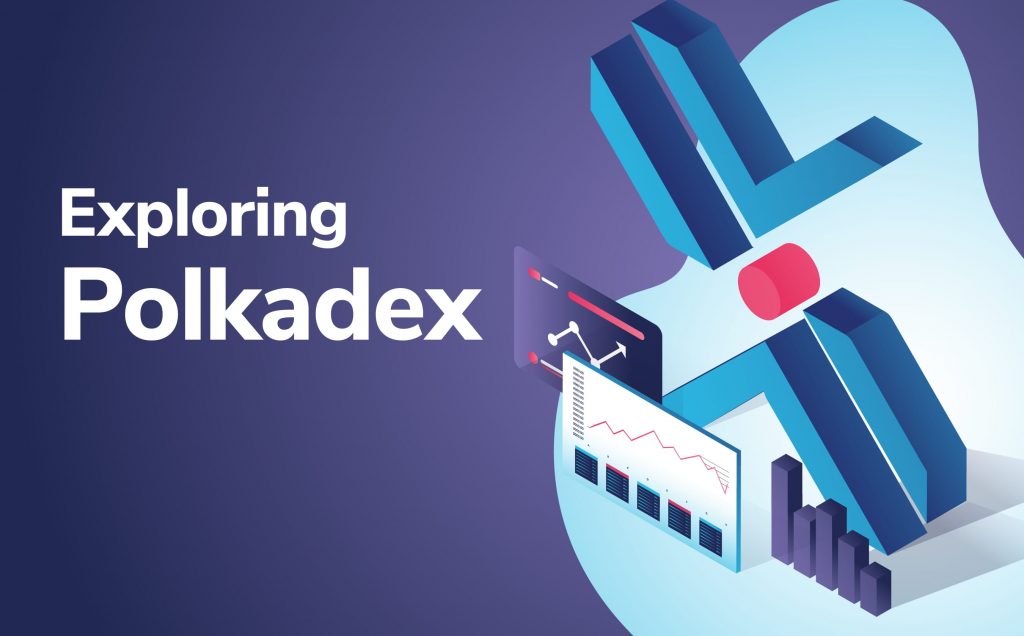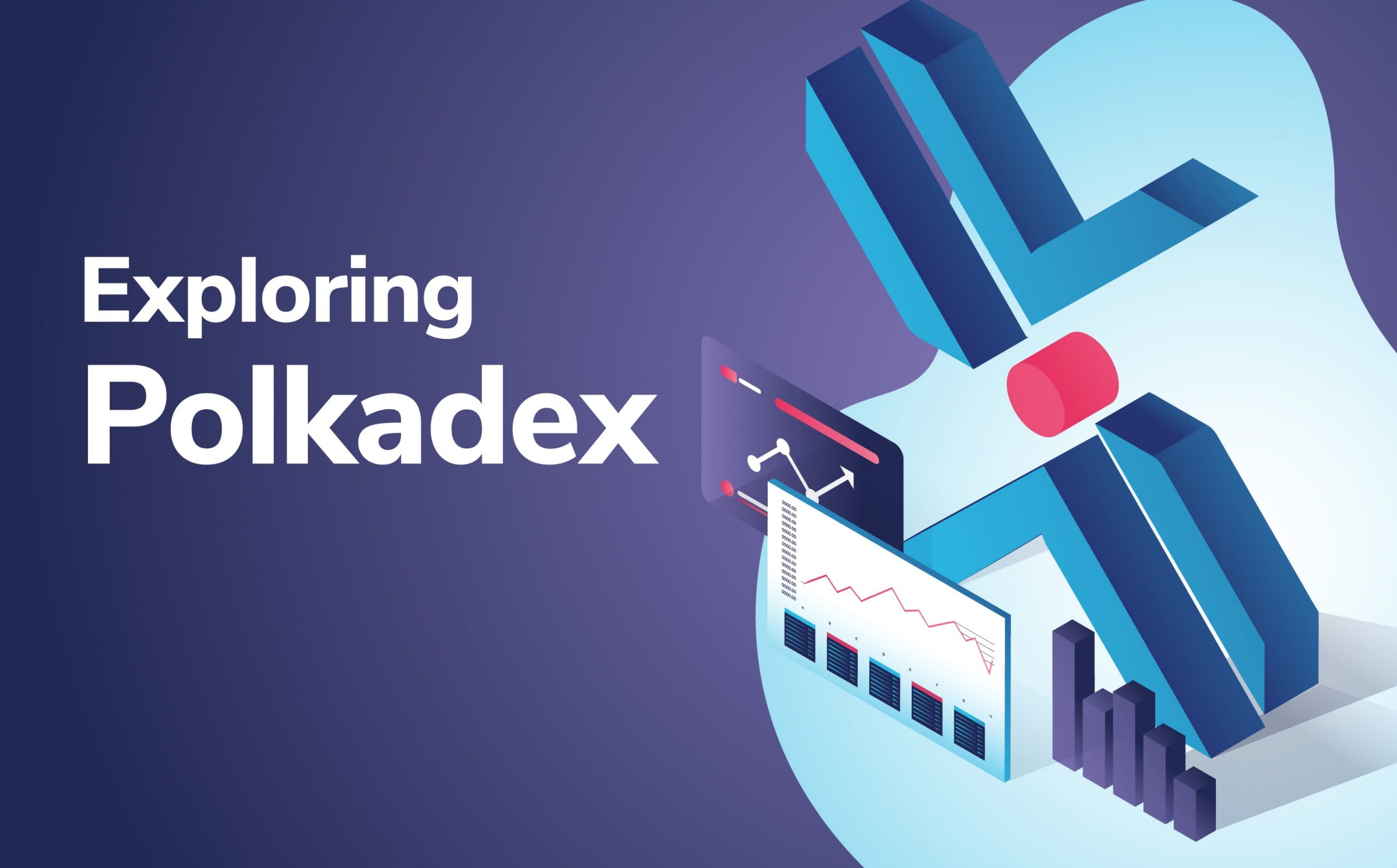
Polkadex is a non-custodial peer-to-peer trading platform merging the benefits of CEXes and DEXes in one product. Polkadex offers a range of fully decentralized tools for modern traders, investors and blockchain teams with its wide functionality. Polkadex is built on Substrate, employs a sophisticated technology stack and is expected to become a major player within the Polkadot ecosystem in the nearest future.
One of the main missions of Polkadex is to bring DeFi to the masses. By focusing heavily on user experience and product interface, Polkadex will set the standard of the DeFi trading and investing revolution. Both newbies and natives within the crypto world will find several features that make Polkadex unique and attractive for them. So, what is Polkadex exactly and what are its main features?
What does Polkadex offer?
Polkadex has three key products on its platform: Polkadex Orderbook with CEX-like functionality in a decentralized environment, Polkapool for swapping tokens and Polkadex IDO Platform for investing in new tokens. All these products bring something unique that is not yet seen on the market.
Polkadex Trading: Orderbook and Polkapool
In the sea of Uniswap clones with the AMM model, Polkadex aims to be a real game-changer. It goes beyond the basic swap functionality and also offers an orderbook-based DEX built with an intricate mix of technologies. The goal of Polkadex is to combine the benefits of trading on centralized and decentralized exchanges and at the same time eliminate any possible bottlenecks of both. Products created by Polkadex will cater to all groups of traders: novice, professional and institutional.
One of the highest priorities for any trading project is the safety of user’s funds. Polkadex Orderbook is a non-custodial Layer 2 based exchange. This translates into users having full custody and control of their assets without the need to worry about hacks and safety of their funds while at the same time being able to swap tokens, set limit orders and delegate their assets to third parties for bot trading.
Users of Polkadex will get decentralized trading experience keeping the full custody of their funds and high level of security as on DEXes but at the same time high transaction speed, very low latency, great UX and advanced trading features similar or better than on CEXes.
Resembling trading experience on centralized exchanges, Polkadex will allow its users to set buy and sell orders, delegate funds to third parties to profit from bot trading and high-frequency trading – things some DEXes lack but modern users want to get from DeFi.
Trading bots on Polkadex bring High-Frequency Trading (HFT) to retail and institutional investors. Zero cancellation fees allow traders to enter and exit the markets in a dynamic fashion based on the market situation and incentivize API endpoints for both trading bot companies and liquidity providers. Moreover, Polkadex introduces fiat on-ramp, meaning that users can easily exchange their fiat for crypto.
Polkadex Advantages
At the same time, Polkadex puts an end to various issues of the DEX industry.
First on the list is crazy gas prices. We all know that Ethereum gas prices made trading on DEXes prohibitively expensive for the majority of non-professional or large volume traders. With transaction fees easily over $100 at times of high network congestion, it does not make any sense to execute trades below $500-1000 on modern DEXes and in turn, obviously deters millions of users from interacting with blockchain tech and its protocols. Polkadex adds a new variable to the equation by delivering gas-free swaps which enable users to swap different tokens without any cost. Additionally, having a Layer 2 orderbook translates into lightning-fast trades (up to 500,000 trades per second) and very low latency (less than 20 milliseconds).
Other important issues that Polkadex puts an end to are front-running, price slippage due to low liquidity and arbitraging. The Polkadex tech stack helps to eliminate these.
Polkadex Launchpad
The Polkadex IDO Launchpad will be a first-of-its-kind platform on the market that is operating fully on the blockchain.
This innovation makes life easier both for blockchain teams, as they can generate tokens, conduct IDOs and crowdfund in a hassle-free, time- and cost-efficient manner, and for retail investors who can benefit from on-chain randomness to get fair chances of being whitelisted and eliminate the need to hold large sums of platform-native tokens to be eligible for participation.
Polkadex launchpad will favour Substrate-based tokens and Polkadot ecosystem but also work with ERC-20 tokens later on.
Polkadex Technologies
Polkadex can offer the above benefits thanks to its sophisticated technology stack. It is the first project that uses the Substrate Abstraction Layer for SGX technology to build a decentralized exchange. It is also one of the first use cases of this technology in general.
Polkadex Orderbook has a unique architecture due to a combination of multiple technologies: blockchain, parachain, TEE, IPFS and other latest tech available in the blockchain industry today.
Polkadex Orderbook consists of four core parts: native blockchain Polkadex Network, Trusted Execution Environment tech initially invented by Intel but soon becoming platform agnostic and helping to keep the highest level of security on Polkadex, Orderbook Engine maintaining high-performance Orderbook and matching trades on it, with IPFS acting as an insurance policy for the entire exchange.
Polkadex provides a solution to promote DeFi to more users by inviting institutions and crypto newbies to trade thanks to the Decentralized KYC tech in partnership with KILT Protocol and Fractal. In this way, Polkadex makes the platform safe for the community, compliant for institutions and allows fiat on-ramp for its users. Most of the features on Polkadex, including swaps, staking and governance, will be available without KYC (this will only be required if a trade goes over $5,000 in the Orderbook).
Important to mention that Polkadex does not have access to user’s personal data at any time. All the information is stored in the user’s wallet in the same way as tokens are.
Polkadex Tokenomics
Polkadex has interesting tokenomics created with the help of the best minds in crypto-economics.
Polkadex’s native token is PDEX with the total supply capped at 20 mln. PDEX supply can fluctuate at times and has a mechanism that will bring the supply back to the max amount using an automatic system of burning tokens self-regulated by the network.
Currently, there is less than 10% of the Total Supply in circulation, as PDEX is at the Testnet stage and is an ERC-20 token now. The remaining tokens will be minted and distributed in tranches after the Mainnet goes live. The biggest part of tokens (41% of the total supply) will be kept in the Treasury and used for listings, governance and ecosystem grants.
As Polkadex is a project with many features, the PDEX token also has multiple use cases. PDEX holders can use it to:
• Pay transaction and trading fees to get discounts on them
• Participate in Polkadex IDOs
• Participate in on-chain governance of the network
• Become a validator of the network by staking
• Nominate validators and collators of the network
Polkadex’s Team and Background
Polkadex was born with the vision of financial freedom for everyone in mind. Since the early days, the project caught the eye of a decentralized community. Polkadex received Web3 Open Grant for development and secured over $3 mln in funding from prominent investors in the space including Kenetic Capital, Outlier Ventures, JRR Crypto, LD Capital and others. Earlier this year they were chosen as one of the most prospective projects on the Polkadot network and presented at Polkadot Decoded event.
Polkadex is an international project with a diverse team of experts led by 3 co-founders – Vivek Prasannan, Gautham J and Deepansh Singh – who are engineers and have solid development and business background. The project is advised by the best experts from the blockchain, finance, legal and marketing industries.
The team counts 20+ highly skilled specialists from all over the world. The core development team works on Polkadex core blockchain, Subtratee Enclave, High-Frequency Trading Orderbook, website and UI/UX frontend, and mobile application. For more details on their Github repository. More details about the team are available on the Polkadex website.
What’s next for Polkadex?
Polkadex has an extensive roadmap featured on its website.
Currently, development is on track and the team released the first features of the product in the Testnet. The Orderbook and IDO Platform in Testnet are expected in July and Mainnet launch is scheduled for the end of September 2021.
Exciting times ahead for Polkadex. Stay tuned through their social media: Twitter | TG Ann | Medium | YouTube | Linkedin | Reddit





